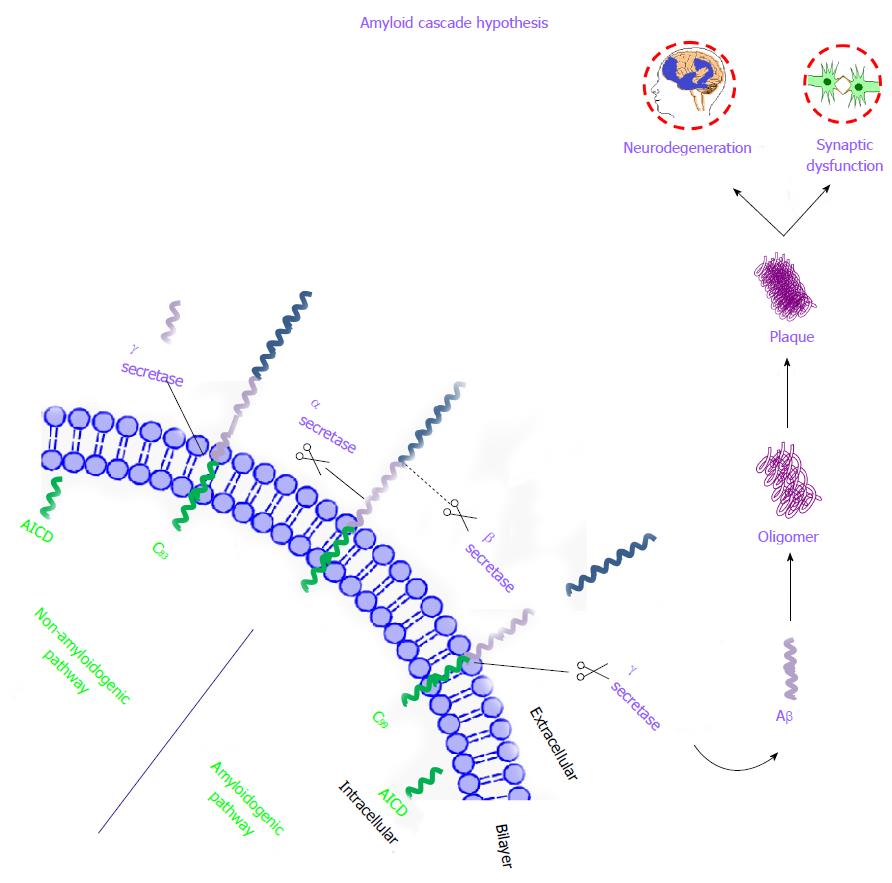Copyright
©The Author(s) 2015.
World J Pharmacol. Sep 9, 2015; 4(3): 236-264
Published online Sep 9, 2015. doi: 10.5497/wjp.v4.i3.236
Published online Sep 9, 2015. doi: 10.5497/wjp.v4.i3.236
Figure 3 Schematic representation of amyloid cascade hypothesis.
Three enzymes α, β, and γ secretase play a crucial role in the proteolytic cleavage of APP. The first step, extracellular fragment of APP is cleaved by α-secretase (non-amyloidogenic and predominant pathway under normal condition) or β-secretase (amyloidogenic pathway predominant under AD) leading to 83 or 99 amino acid peptide residues respectively that remain attached as a trans membrane fragment. These fragments are ultimately cleaved by γ-secretase which leads to formation of toxic Aβ(1-42) fragments in case of amyloidogenic pathway and initiates the extracellular Aβ plaque formation. APP: Amyloid precursor protein; AD: Alzheimer’s disease.
- Citation: Desai P, Shete H, Adnaik R, Disouza J, Patravale V. Therapeutic targets and delivery challenges for Alzheimer’s disease. World J Pharmacol 2015; 4(3): 236-264
- URL: https://www.wjgnet.com/2220-3192/full/v4/i3/236.htm
- DOI: https://dx.doi.org/10.5497/wjp.v4.i3.236









